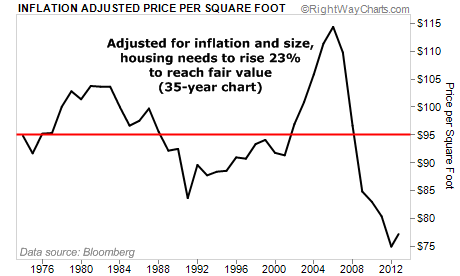| Home | About Us | Resources | Archive | Free Reports | Market Window |
|
Editor's note: For several months now, our colleague Dr. David Eifrig has been conducting a sensitive research project. He began it because he believes that over the past decade or so, something has changed about America. One of the most obvious changes is the increase in government "security" measures. These measures often inconvenience and distress rational citizens. Fortunately, he's found a few "loopholes" that can help you avoid the worst of it... How to Avoid the Worst Kind of Government IntrusionBy
Friday, December 28, 2012
The sad truth is that America is a very different place than it was just a dozen years ago.
If you've flown out of an airport over the last two years, you know exactly what I'm talking about.
In 2010, the Transportation Security Administration (TSA) changed its passenger-screening policies. From then on, travelers were forced to submit to a virtual strip search. These full-body scanner machines are so invasive, they were even held up for a time in the United Kingdom... The graphic images they provided violated the U.K.'s child pornography laws. And this doesn't even count the machines' harmful health effects.
You can choose to opt-out... But then you must endure an invasive pat-down search, where a TSA screener lays hands all over your body.
It's hard to believe these degradations now happen in "the land of the free." But as I'll show you today, there is a solution...
You have to jump through a few hoops and play the government's game. But once you do, you won't have to submit to humiliating and even dangerous searches.
The TSA has initiated a "trusted traveler" program. It's called "TSA Pre-Check." Travelers who enroll in the program must undergo a background check and pay a $100 fee. The background check lasts for five years.
After approval, Pre-Check travelers can go through expedited screening lines about 80% of the time. These lines somewhat mimic the bygone days of air travel, including:
Not every airport and airline is a part of the program, but the number is growing. Currently, five major airlines and 35 airports participate in the program. Further expansion is expected in 2013.
And Pre-Check isn't open to all passengers yet... Right now, only folks who are part of the Customs and Border Protection (CBP) or are frequent travelers on specific airlines (like American Airlines, Delta, and U.S. Airways) are eligible.
But there is a "backdoor" way into the program. Travelers enrolled in a CBP program called "Global Entry" are eligible for Pre-Check. And as long as you're a U.S. citizen with no criminal background and you fill out the application truthfully, you should be approved.
In fact, I've just recommended my brother and sister take advantage of this. I think it's well worth the background check and application fee. You can learn more about both programs here.
Participating in the Pre-Check program is not a perfect solution. The TSA can still subject you to radiation scanning and pat-downs. But your odds of having a simple travel experience are improved.
And I know I'll personally never go through another full-body scanner again.
Here's to our health, wealth, and a great retirement,
Dr. David Eifrig
Further Reading:
Yesterday, Dr. Eifrig showed readers how to take control of their own retirement. "However you do it, don't wait," he says. "Why leave your pension – the money you're counting on for retirement – in someone else's hands?" You can read about it here. And catch up on more ways to protect yourself and your assets here and here.
Market NotesTHE UPSIDE FOR STEVE SJUGGERUD'S FAVORITE ASSET Cheap houses and cheap money are combining to create a safe, big-upside "trade" in housing…
It's "housing week" in Market Notes. We've already shown you that U.S. homes are at record levels of affordability… that the uptrend has begun… and that once a beaten-up housing market gets moving, it can move fast. But we saved the most interesting chart for last. Today's chart shows you how large the potential gains can be…
Below, you'll find a chart of the median home's price per square foot… and how far below "fair value" it is today. Fair value is simply the median price since 1973, or about $95 per square foot. With the average home at $77 per square foot, home prices would have to rise 23% to reach fair value. That's a great gain, especially considering that you don't have to pay taxes on it if you're selling your primary residence.
But factor in today's record-low mortgage rate and the gains get much bigger. If you put 20% down, borrow the rest at the average 3.4% rate for 30-year mortgages, and sell five years later at "fair value," you'd collect a 124% return on your "out of pocket" costs (down payment plus mortgage payments). Not bad for such a safe trade.
– Amber Lee Mason
 |
Daily Crux Best of '12Top investors on gold
Thursday, January 12, 2012
"This is a time when almost every central bank in the world is grinding out paper currency by the car-load..."
Friday, March 02, 2012
"If I were an American, I would store it outside the U.S..."
Friday, April 13, 2012
"There are some things happening which could destroy the price of gold..."
Monday, April 23, 2012
A must-read for anyone with money in this volatile sector...
Friday, July 13, 2012
"One has to wonder whether so much buying may signal a top..."
Recent Articles
|


